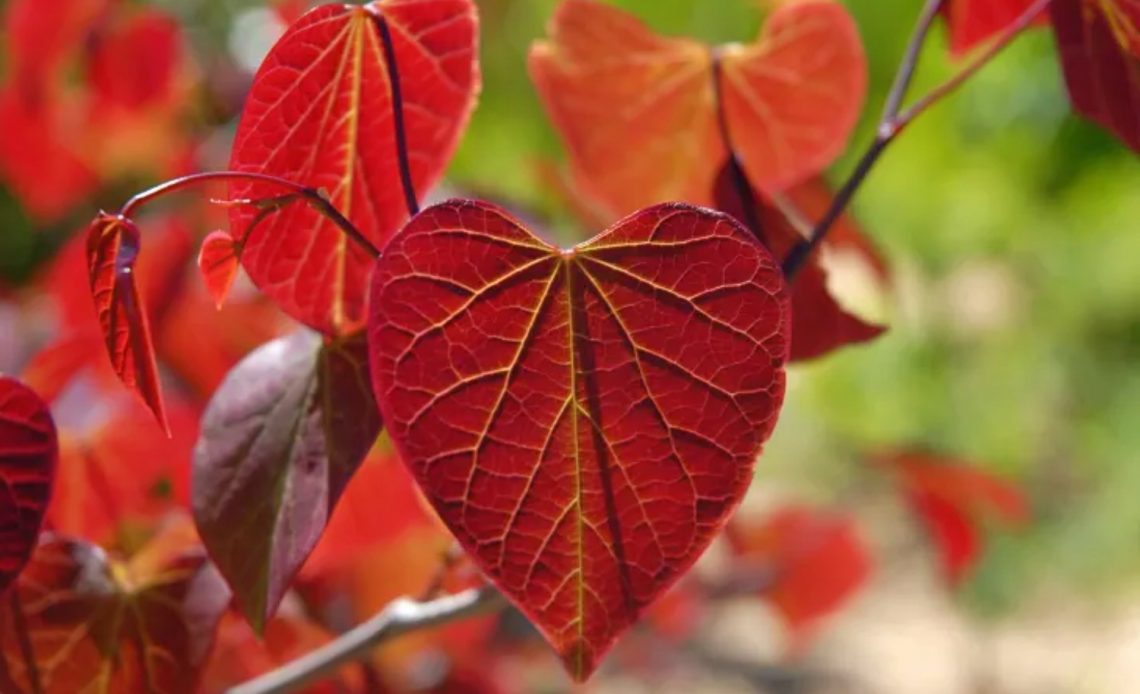

We’re here to help! Wild Yards is a completely free website that is 100% dedicated to helping you create a wildlife-friendly, sustainable yard. Read more
WildYards is reader-supported. When you buy a product through a link on our site, we may earn a comission. Every product is independently selected by our (obsessive) editors and our reviews are unbiased and objective. Read more about our mission or our privacy policy.
Trees are an integral part of any landscape, and a good tree should do several things. For starters, a tree should provide some amount of erosion control, particularly if you have a sloped front yard. And, for another, a tree should add visual interest to your property. Trees with vibrant colors and interesting foliage are the perfect addition to your landscape because they create a backdrop for neighboring flowers. For instance, trees with heart-shaped leaves make the perfect accent plant for your backyard thanks to their distinctive leaves.
Eastern redbud trees have gorgeous heart-shaped leaves with smooth edges and a matte finish, giving your garden an elegant, understated appearance. Catalpa, handkerchief, paulownia, quaking aspens, and American lime trees also possess heart-shaped leaves.
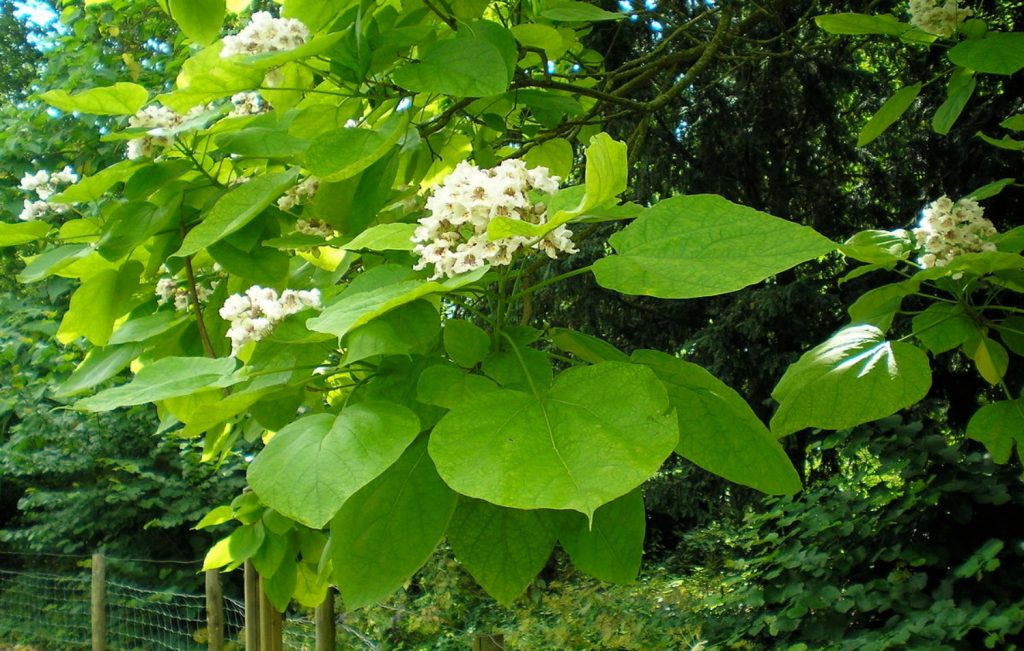
10 Trees with heart-shaped leaves for your backyard
Some trees have heart-shaped leaves, with narrow tips and a broader base that dips inward where the leaf meets the petiole (the small stem that attaches individual leaves to the tree’s branches). The edges of these leaves can be smooth or serrated depending on the tree in question. They can also be shiny or flat in finish, and smooth or rough in texture.
Heart-shaped, or cordiform leaves, are also called cordate leaves, with the word “cordate” coming from the Latin cordatus, which means “heart-shaped”. Leaves vary in size, with some trees having heart-shaped leaves larger than the average human hand, and some having heart-shaped leaves that are only a few inches in length. Here are 10 amazing trees with heart-shaped leaves to include in your landscaping.
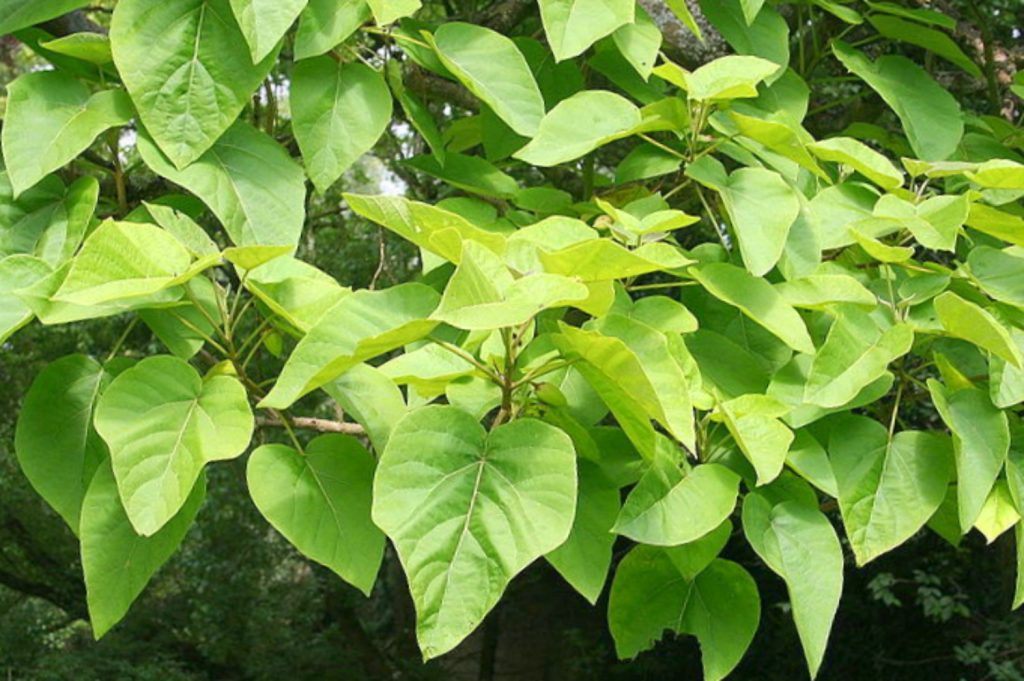
Eastern Redbud
| Scientific Name: | Cercis canadensis |
| Lifespan: | 20 years on average, but sometimes up to 40 years |
| Growing Zone: | 4 through 9 |
| Height: | 20’ to 30’ |
| Spread: | 10’ to 15’ |
| Growth Rate: | Moderate |
| Leaf Size: | 3” to 5” long |
| Sunlight Requirements: | Full sun to partial shade |
| Soil Type: | Alkaline to acidic; moist yet well-draining |
One of the most popular trees with heart-shaped leaves, eastern redbuds are a landscaping favorite thanks to their easy-growing nature. These trees are tolerant of sandy, loamy, and clay-rich soils, as long as they drain well. Eastern redbuds are capable of growing in fertile and nutrient-poor soils and grow best in full sun. However, in southern states, eastern redbuds typically perform best in partial shade, as extreme heat stresses them and stunts their growth.
Eastern redbuds produce clusters of reddish-purple blossoms from February to April. These flowers provide native pollinators with an early food source, helping them meet their nutritional demands before other flowering plants have sprouted. Feed plants with a 10-10-10 fertilizer in spring to encourage healthy blooms and foliage production. And be sure to water young plants 3 times a week, or whenever the soil is dry at a depth of 3 inches, to help them get established.
Overall, eastern redbuds are incredibly low maintenance. Adequate water and good drainage are all that is necessary to keep these trees looking great. Annual pruning prevents trees from becoming scraggly. Trim away dead and deformed branches to improve the plant’s shape and stimulate new growth. Always wait until the tree has stopped blooming for the season before removing any branches, since pruning the plant before it blooms can prevent it from flowering altogether.
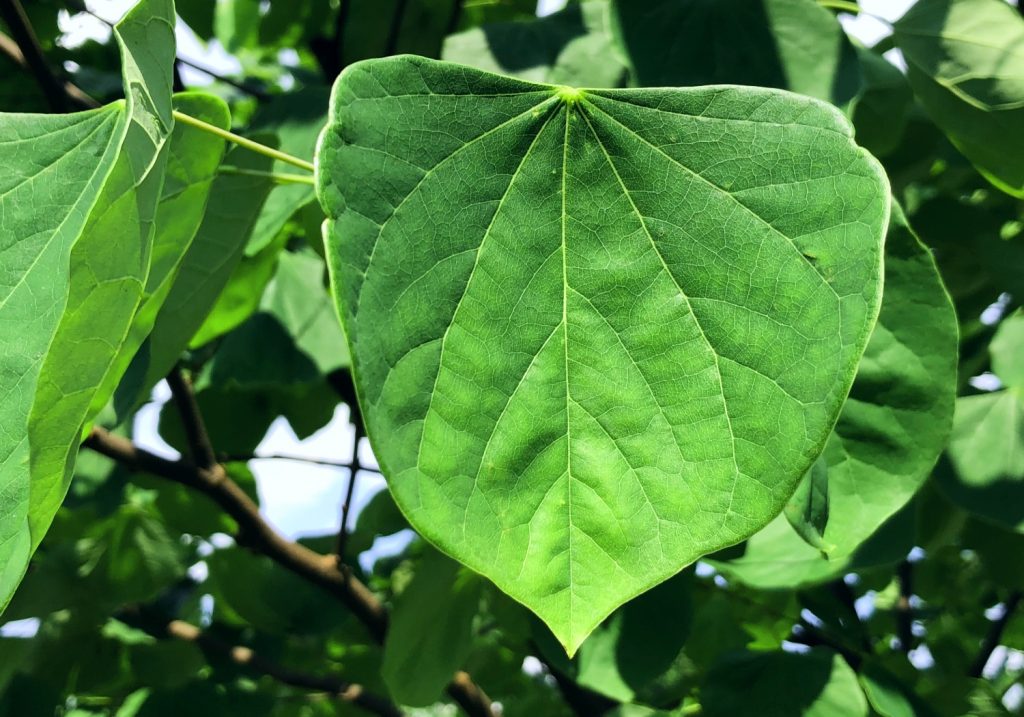
Benefits of eastern redbud trees
Did you know that the flowers of the eastern redbud tree are edible? Many backyard foragers include the delicate buds in fresh spring salads, but they can also be dehydrated, sauteed, and even pickled. The seed pods are edible as well and are perfect for snacking.
While the eastern redbud is one of the most popular varieties, there are several other cultivars worth considering. The ‘Hearts of Gold’ redbud, for instance, is a compact tree that produces vibrant golden-green leaves. Meanwhile, ‘Ruby Falls’ and ‘Merlot’ redbud trees create cascades of red foliage, an appropriate color for a tree with heart-shaped leaves, don’t you think?
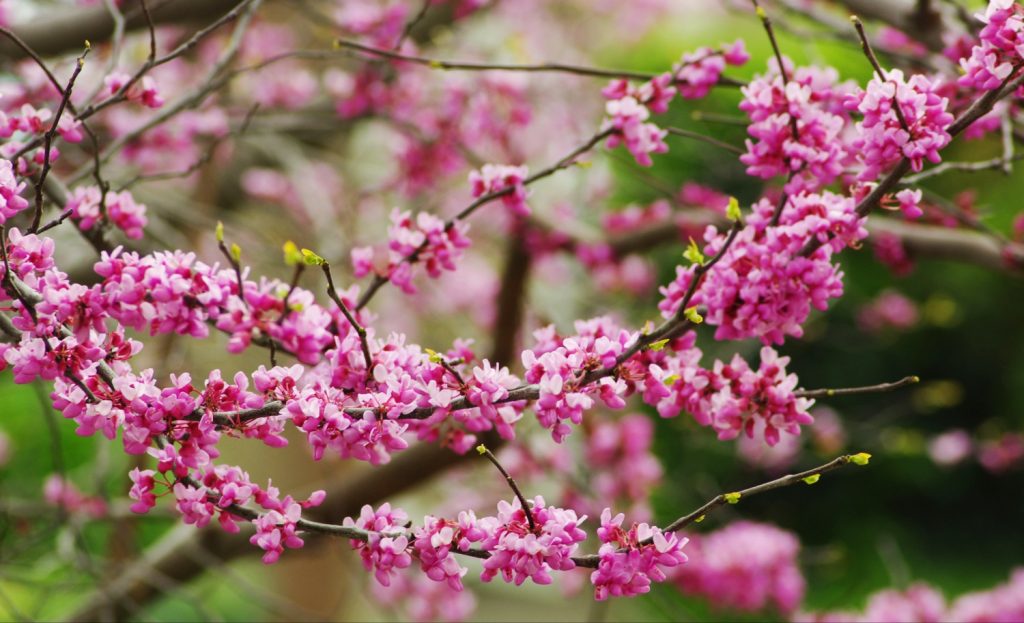
Paulownia
| Scientific Name: | Paulownia tomentosa |
| Lifespan: | Up to 70 years |
| Growing Zone: | 7 through 11 |
| Height: | 40’ to 50’ |
| Spread: | 30’ to 40’ |
| Growth Rate: | Fast |
| Leaf Size: | 4” to 9” long |
| Sunlight Requirements: | Full sun to partial shade |
| Soil Type: | Slightly acidic to slightly alkaline; moist, well-draining sandy loam |
Named in honor of the Russian Princess Anna Pavlovna, the paulownia tree is also called the royal empress tree, the princess tree, and the foxglove tree. When planted in ideal conditions, these trees grow lightning fast at a rate of about 15 feet per year, making them one of the fastest-growing hardwoods in the world. Young paulownia trees produce enormous heart-shaped leaves, but they gradually decrease in size as the plant matures.
Paulownias are invasive and capable of growing where other trees can’t. They thrive in nutrient-deficient soils as well as downright toxic ones, such as those contaminated by black locust trees, which release poisonous compounds into the soil in an effort to kill neighboring plants. Paulownias are so hardy that many gardeners consider them to be weeds.
For a few weeks during the spring, paulownia trees produce delicate lilac-colored flowers that resemble foxgloves or upside-down wisteria flowers. These blossoms attract loads of bees, butterflies, and hummingbirds. Be sure to water your paulownia trees deeply with a watering hose every week. Adequate hydration is essential to maximize growth.
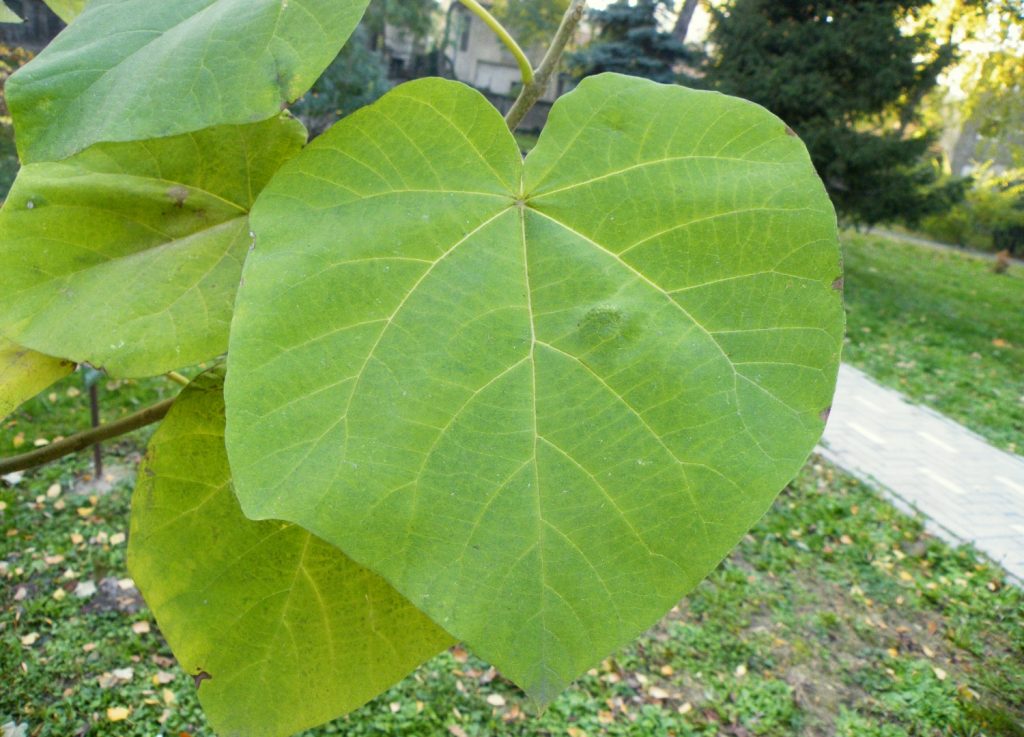
Benefits of paulownia trees
The ultra-fast-growing paulownia tree converts CO2 to oxygen roughly 4 times faster than traditional hardwoods, like oaks. These trees are a major asset to insects, who rely on their early blooms as an additional food source. Taking good care of your region’s pollinators ensures native plants produce enough fruits, nuts, and seeds to feed the local wildlife, creating a trickle-up effect that improves the health of the entire ecosystem.
American Lime
| Scientific Name: | Tilia americana |
| Lifespan: | 150 to 200 years |
| Growing Zone: | 3 through 8 |
| Height: | 50’ to 80’ |
| Spread: | 40’ to 50’ |
| Growth Rate: | Moderate to fast |
| Leaf Size: | 3” to 6” long |
| Sunlight Requirements: | Full sun to partial shade |
| Soil Type: | Acidic to neutral soils; well-draining sandy loam |
Also called the linden tree or basswood, the American lime tree grows around 2 feet per year giving your yard some quick shade. In spring, the tree’s fragrant yellow-white flowers attract pollinators. And, when the trees are done blooming, they produce small brown nutlets that birds and squirrels enjoy nibbling on.
The American lime tree has heart-shaped yellow-green leaves with serrated edges that are about the size of a human hand. The tree’s broad canopy casts a lovely shade on the ground below, giving the tree a stately appearance. American lime trees don’t require much maintenance and can stand up to intense pruning if need be.
These trees are not drought-tolerant, although, they are able to adapt to moist soils, as long as they aren’t completely water-logged. Be sure to water your young American lime trees regularly, anytime the soil feels dry 3 inches below the surface. Mature trees have extensive root systems, and generally don’t require watering, except in extremely dry conditions.
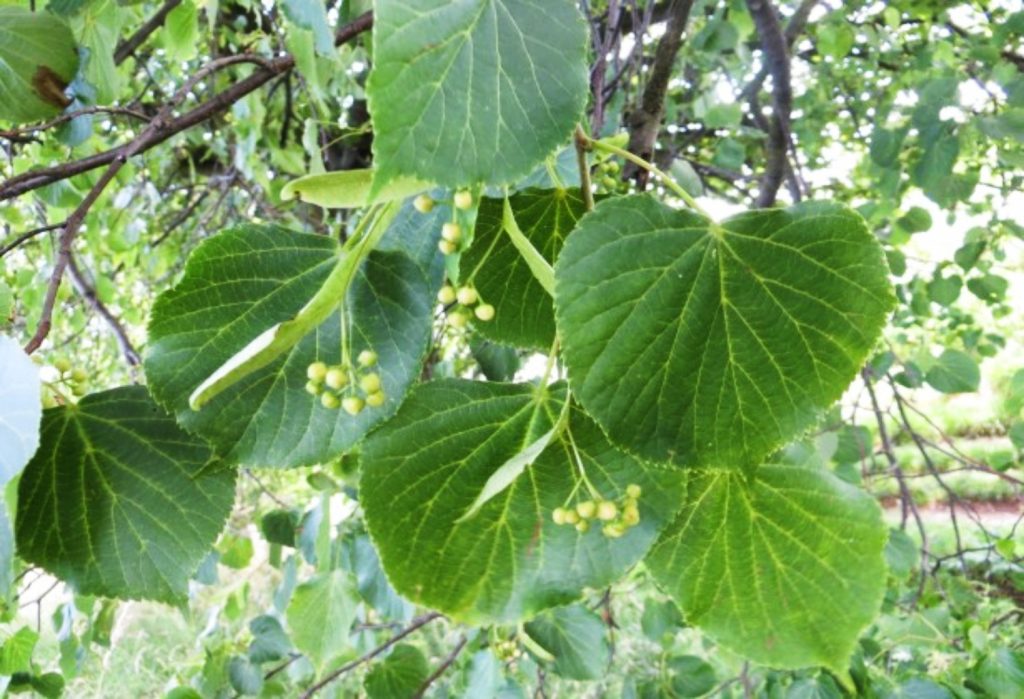
Benefits of American Lime trees
The sap of the American lime tree is used to improve liver and kidney function and adding the tree’s flowers to a bath is said to ease insomnia. The American lime tree’s flowers are also popular with bees, who will forage on them almost exclusively when they’re available. The resulting “basswood honey” is easily distinguished from other types of honey because of its bitter, spicy, woody undertones.
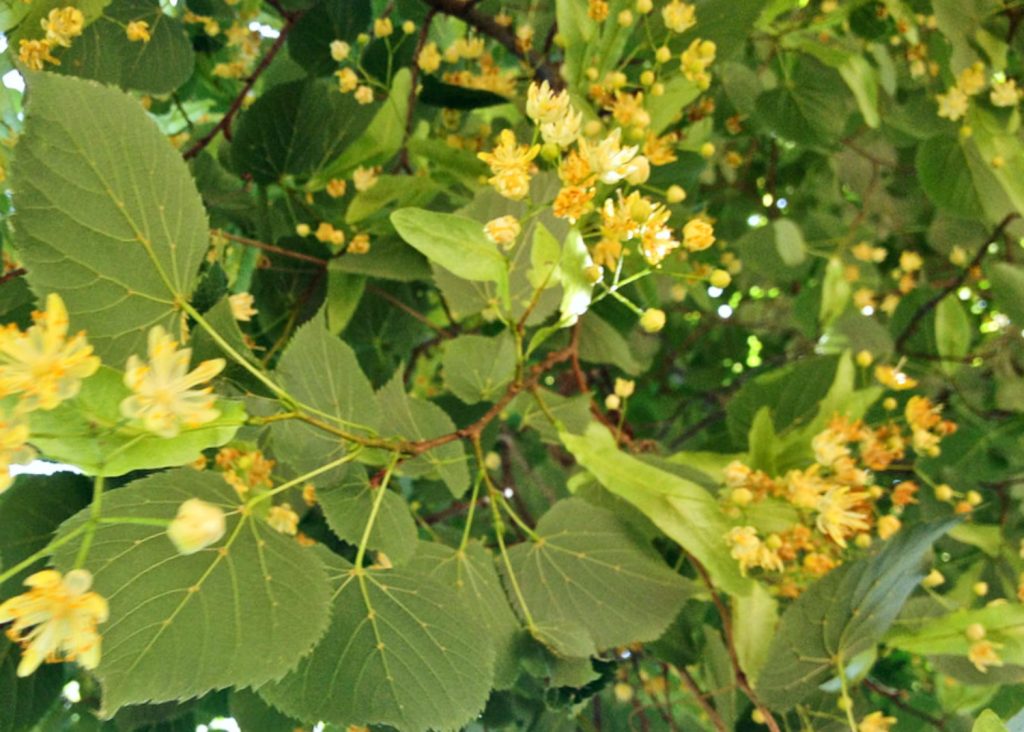
Southern Catalpa
| Scientific Name: | Catalpa bignonioides |
| Lifespan: | 70 years on average, but sometimes over 100 years |
| Growing Zone: | 5 through 9 |
| Height: | 20’ to 30’ |
| Spread: | 15’ to 20’ |
| Growth Rate: | Moderate to fast |
| Leaf Size: | 4” to 8” long |
| Sunlight Requirements: | Full sun |
| Soil Type: | Slightly acidic to slightly alkaline; well-draining sandy loam |
The southern catalpa tree can be identified by its large heart-shaped leaves and long green bean pods, which have earned it the nickname “cigar tree”. These moderate to fast-growing trees have short, sturdy trunks and thick foliage. Their tolerance to air pollution makes them popular street trees.
Southern catalpa trees bloom in early summer when their dainty white flowers attract bees and wasps. Their long bean pods, which measure roughly 15 inches, stay on the tree until they dry up, turn brown, and pop open, scattering seeds on the ground nearby. In autumn, the southern catalpa’s smooth-edged heart-shaped leaves turn yellow, creating a vibrant landscape before the cold weather sets in.
This tree isn’t too picky, often growing best when it’s simply left alone. Plant your southern catalpa in slightly acidic to slightly alkaline soil that drains well. A sandy loam-type soil works best. Be sure to water young plants twice a week, more often during a dry spell. Rainfall is enough to keep mature trees hydrated, although they may need supplemental watering during severe droughts.
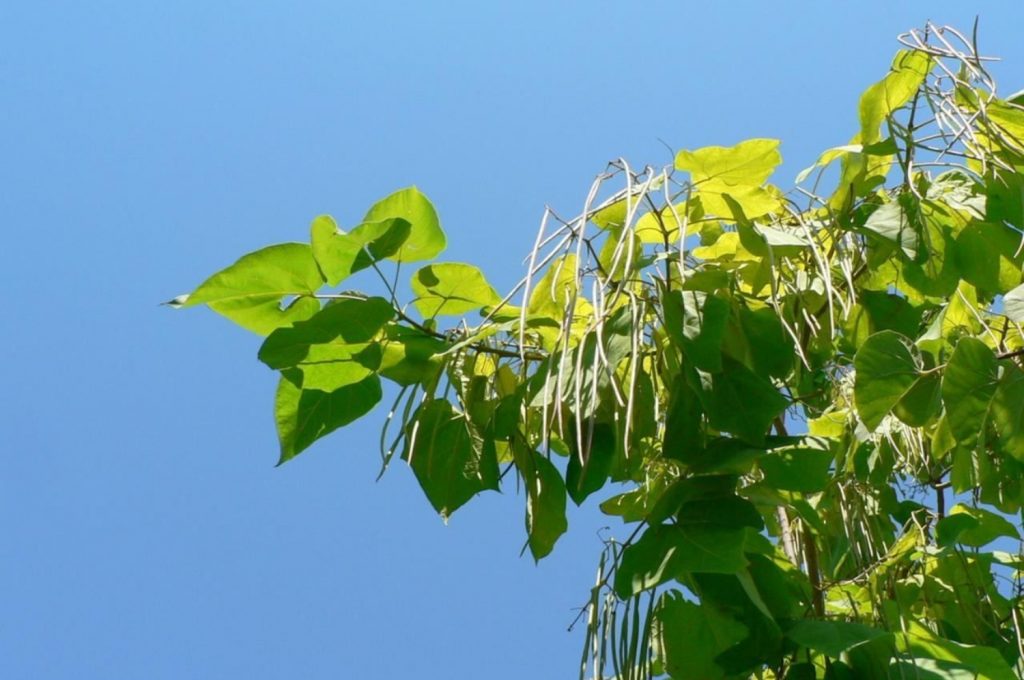
Benefits of southern catalpa trees
If you have a wide open space that bakes in the sun, and you need shade fast, then the southern catalpa just became your new best friend. These trees sprout up in fields of their own accord, where they grow steadily completely unattended. To say this tree is easy to grow would be an understatement.
For cooler growing zones, choose the northern catalpa. This tree produces heart-shaped leaves, white flowers, and long seed pods, much like the southern catalpa. The main difference is that the northern catalpa grows slightly larger, reaching 40 to 60 feet tall and 20 to 30 feet wide at maturity.
Handkerchief
| Scientific Name: | Davidia involucrata |
| Lifespan: | Up to 80 years |
| Growing Zone: | 6 through 8 |
| Height: | 20’ to 60’ |
| Spread: | 20’ to 40’ |
| Growth Rate: | Moderate to fast |
| Leaf Size: | 2” to 5” long |
| Sunlight Requirements: | Full to partial sun |
| Soil Type: | Slightly acidic to slightly alkaline; well-draining sandy loam |
The heart-shaped leaves of the handkerchief tree have serrated leaves and are rough in texture, much like the leaves of a blackberry plant. This tree’s interesting-looking foliage is set off by its even more interesting-looking flowers. After 10 to 12 years, the handkerchief tree produces white blossoms that measure around 8 inches in length. Flowers feature a long teardrop-shaped petal (called a bract) at the bottom, giving the bloom the appearance of a draped handkerchief — hence the tree’s name.
The handkerchief tree doesn’t require any special attention to grow well. Trees are tolerant of a range of soil types, from nutrient-poor clay and sand to fertile loam. Just be sure to meet the plant’s light and water requirements, and it will grow just fine. Water young trees twice a week, whenever the soil feels dry 2 inches down.
Handkerchief trees are something of an anomaly here in the United States. They’re far more popular in England, where they were popularized by Sir Harry Veitch. So while you’re not likely to find one at your local nursery, you can still track down seeds online, if you’re determined to have one of your own.
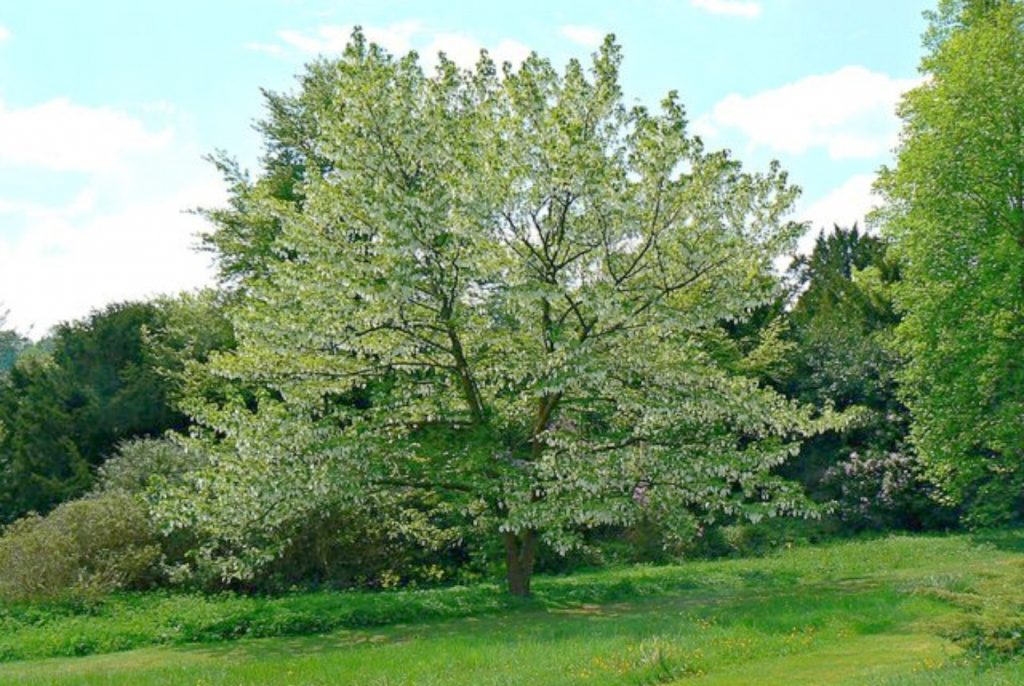
Benefits of handkerchief trees
After the handkerchief tree flowers, it produces small brown fruits. This tree is a birdwatcher’s dream come true as it has the potential to attract cedar waxwings, blue jays, cardinals, goldfinches, and many other fruit-eating birds.
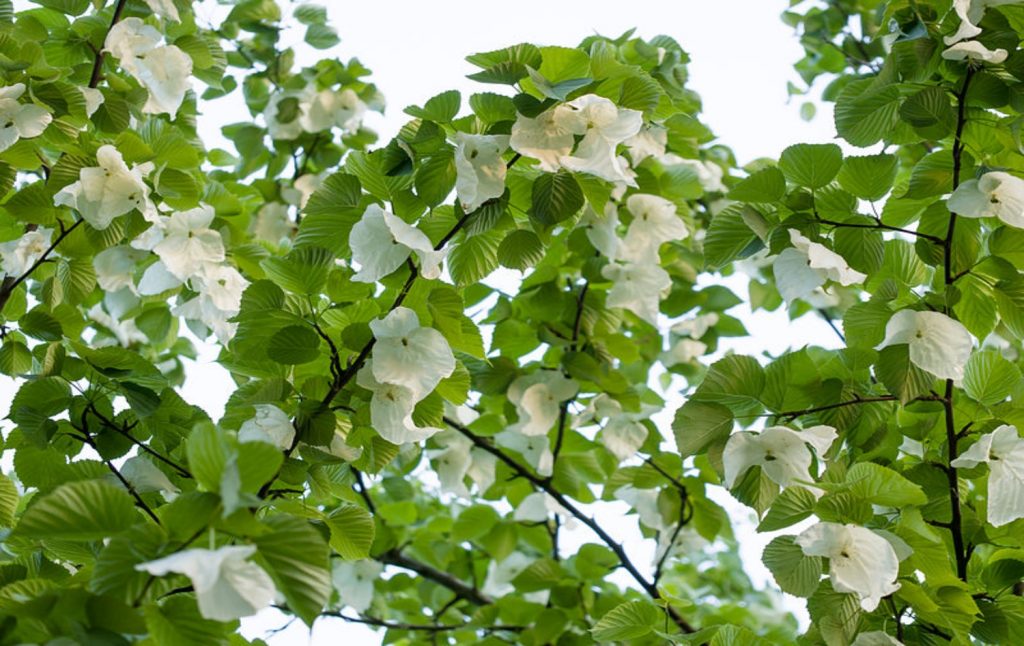
Quaking Aspen
| Scientific Name: | Populus tremuloides |
| Lifespan: | 150 years on average, but sometimes up to 200 years |
| Growing Zone: | 1 through 6 |
| Height: | 40’ to 50’ |
| Spread: | 20’ to 30’ |
| Growth Rate: | Moderate to fast |
| Leaf Size: | 1” to 3” long |
| Sunlight Requirements: | Full to partial sun |
| Soil Type: | Slightly acidic; moist but well-draining sandy loam |
You won’t find the quaking aspen tree growing in hot, humid climates. But, if you live in a cool growing zone and you’re looking for a tree with heart-shaped leaves, then this could be the right one for you. The quaking aspen grows at a rate of about 2 feet per year and can tolerate a range of soil types, including clay, sand, and loam.
The quaking aspen produces small, uniform heart-shaped leaves projecting from a tall thin trunk. These trees create adequate shade, but thanks to their linear growth pattern, they look best when planted in small groves. Orioles, grosbeaks, sapsuckers, and woodpeckers are among the birds that call quaking aspen trees home. Keeping a row of these trees on your property is a great way to attract them to your yard.
Quaking aspens don’t require a ton of water, but they should be planted in soil that can easily be kept moist. You may need to use sand to amend your native soil to ensure that it drains well enough. These trees typically grow in forests, where a substrate of leaves and rotting wood acts as a natural mulch to hold moisture in the soil. Consider spreading a layer of woodchips or straw as a substitute.
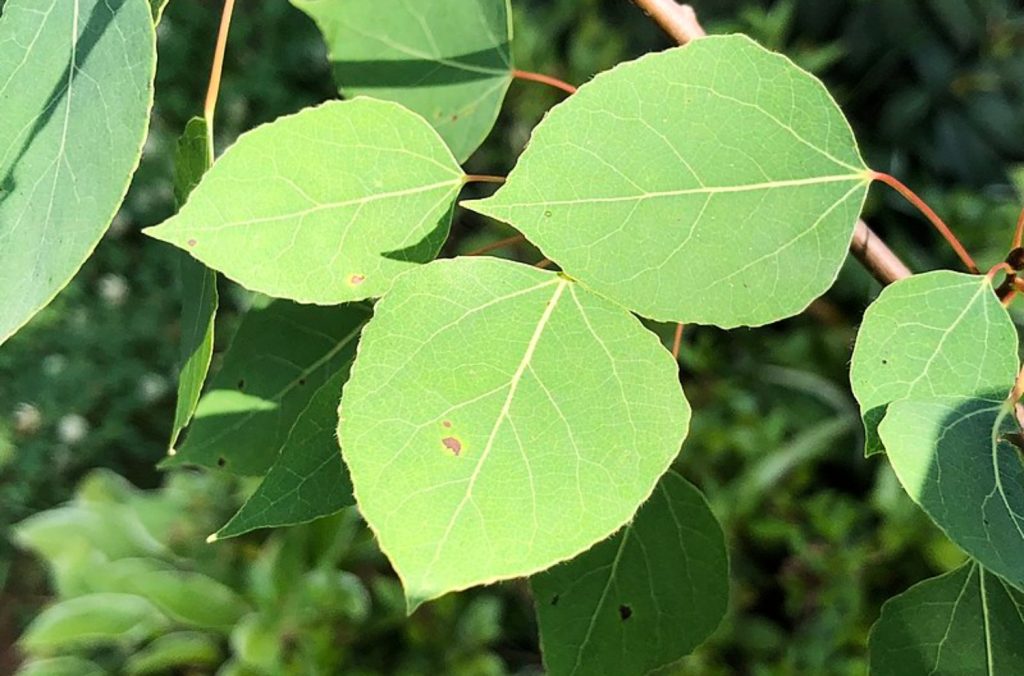
Benefits of quaking aspen trees
When it comes to fall foliage, the quaking aspen is king. Its display of yellow and orange heart-shaped leaves against a backdrop of silvery white bark will turn your backyard into an autumn wonderland. Plant these trees on the northerly side of your home to protect it from the winter winds, or on the westerly side to block out the sun in the summer.
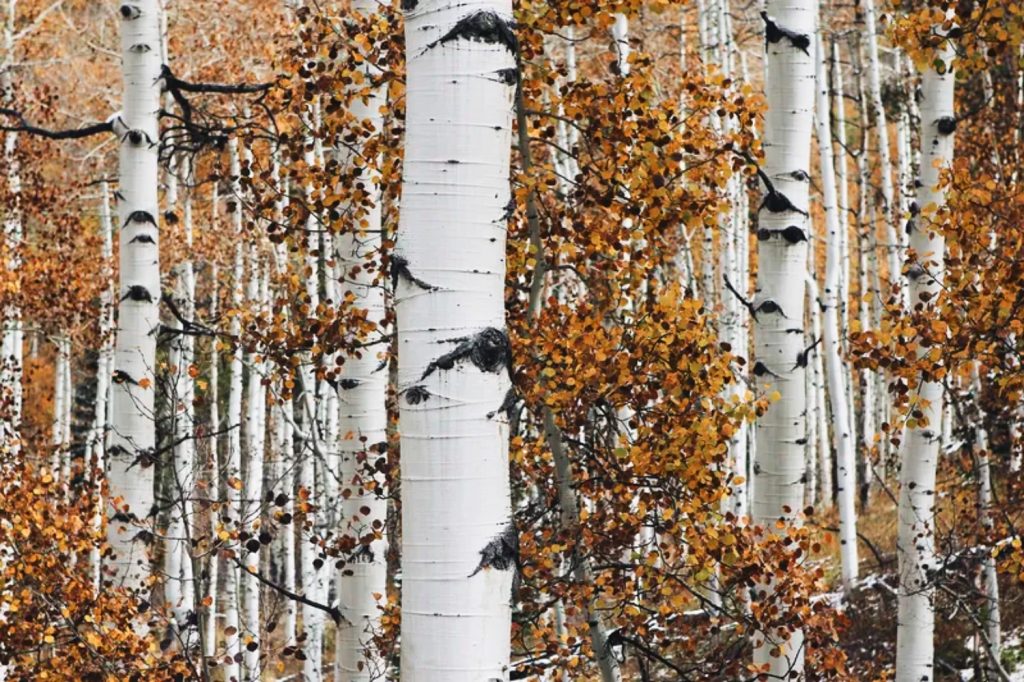
Red Mulberry
| Scientific Name: | Morus rubra |
| Lifespan: | Up to 175 years |
| Growing Zone: | 3 through 9 |
| Height: | 40’ to 60’ |
| Spread: | 20’ to 40’ |
| Growth Rate: | Moderate to fast |
| Leaf Size: | 4” to 8” long |
| Sunlight Requirements: | Full to partial sun |
| Soil Type: | Acidic to alkaline; clay, sand, loam |
Red mulberry trees bloom in spring, producing deliciously fragrant flowers that are pollinated by butterflies, bees, and birds. After the blooming period, the blossoms give way to berries that turn from green to red to deep purple-black when ripe. These sweet-tasting fruits make wonderful jams and jellies, but they’re great for attracting squirrels and birds, too.
One of the good things about red mulberry trees is that they’re extremely drought-tolerant. You can plant these trees in the most unforgiving soils, even those full of salt and other toxins, and they’ll just keep growing. Young trees, of course, should be watered twice weekly until well established. But mature trees don’t require any extra attention.
Red mulberry trees are quite sizeable, with a spread almost as large as the plant is tall. So be sure to give the plant plenty of space. Once the tree has matured, you’ll have a lovely shady location in your backyard, a nice place to show off the tree’s handsome heart-shaped leaves.
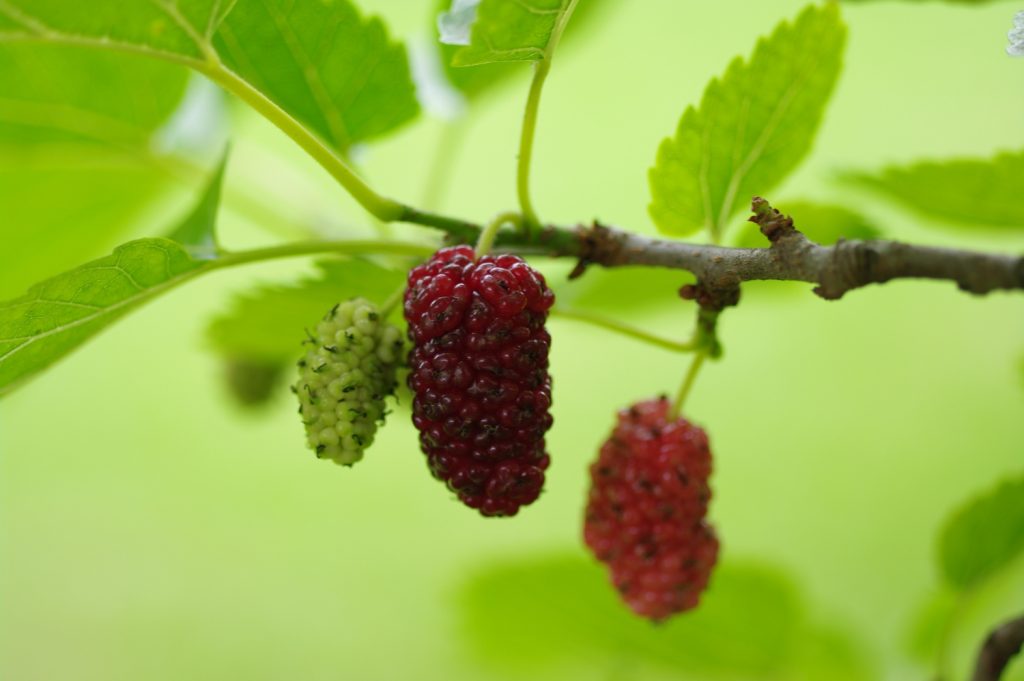
Benefits of red mulberry trees
Red mulberry trees grow well in sandy soils and can handle being planted on a slope. If you have a hilly landscape and you’re in desperate need of erosion control, the red mulberry is the perfect solution. The flowers are also a hit with insects. Consider keeping one of these trees near your garden to enhance pollination rates and improve crop yield.
Red mulberries provide birds and squirrels with food and a home. They also attract deer, who enjoy eating their heart-shaped foliage, particularly the tender young leaves.
Italian Alder
| Scientific Name: | Alnus cordata |
| Lifespan: | 60 to 70 years |
| Growing Zone: | 5 through 8 |
| Height: | 40’ to 50’ |
| Spread: | 20’ to 30’ |
| Growth Rate: | Moderate to fast |
| Leaf Size: | 0.5” to 2” long |
| Sunlight Requirements: | Full sun |
| Soil Type: | Acidic to alkaline; sandy soils that tend to stay dry |
Italian alder trees are native to (where else?) Italy, and first became popular when they were imported to Britain in the early 1800s. These trees produce scads of small heart-shaped leaves, and their upright nature with moderate spread makes them a fashionable choice for your backyard. Italian alders are ideal for creating a windbreak because they’re tall enough and wide enough to stop strong wind gusts, while still allowing air to circulate at the base of the tree.
For as pretty as these trees are, they certainly don’t require much work. Italian alders are accepting of acidic to alkaline soils, and grow best in sandy soils that stay dry. These trees are more than capable of growing in a drought, but they’re tolerant of occasional flooding as well. This is a great choice for lowland areas.
One thing that’s worth keeping in mind: Italian alder trees have invasive root systems. We’re talking seriously invasive. An Italian alder tree’s roots can cause massive damage to structural foundations and water pipes. And to make matters even more difficult, the roots aren’t susceptible to rot, making them doubly hard to treat. So, save yourself the headache and plant your Italian alder trees at least 50 feet away from concrete foundations, septic systems, and pipelines.
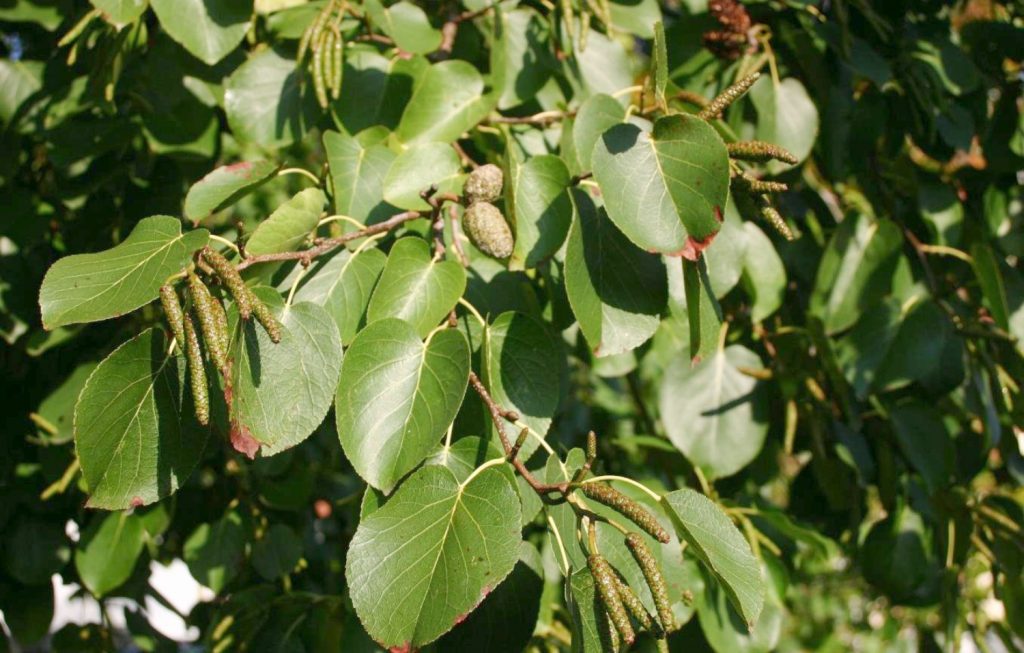
Benefits of Italian alder trees
Italian alders are nitrogen fixers, turning the nitrogen in the soil into a form that surrounding plants can actually use. Nitrogen is essential for photosynthesis and helps plants produce healthy green foliage. These fast-growing trees improve the soil’s nutritional value fast, so the other plants in your landscaping can grow more quickly, too.
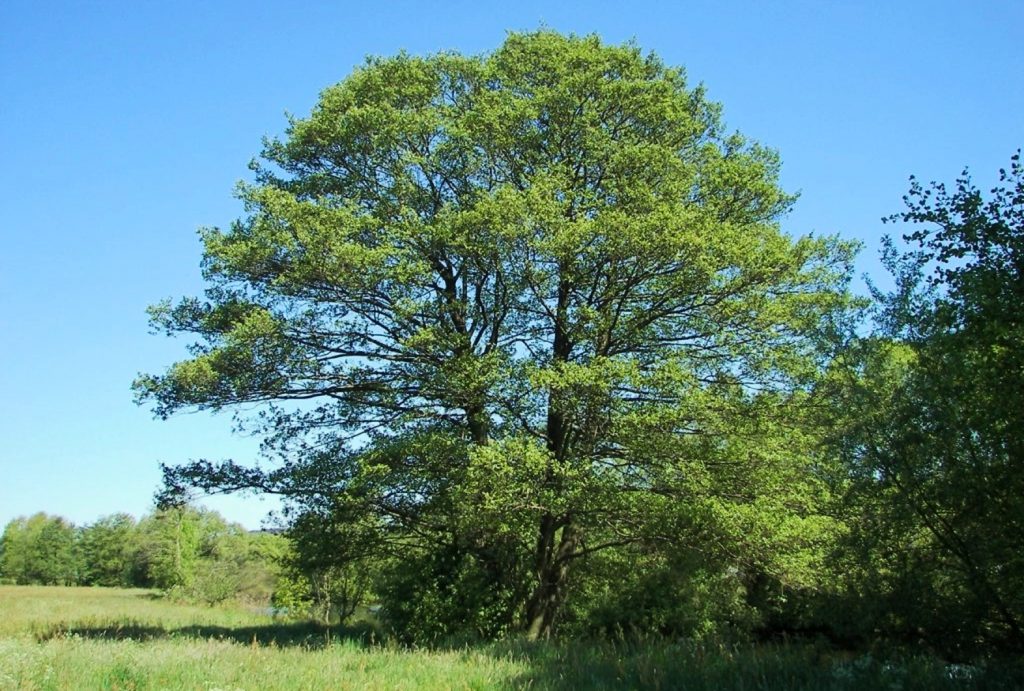
Katsura
| Scientific Name: | Cercidiphyllum japonicum |
| Lifespan: | 60 years on average, though some are upwards of 500 years old |
| Growing Zone: | 5 through 8 |
| Height: | 40’ to 60’ |
| Spread: | 20’ to 30’ |
| Growth Rate: | Fast |
| Leaf Size: | 1” to 3” long |
| Sunlight Requirements: | Full to partial sun |
| Soil Type: | Slightly acidic to neutral; moist, well-draining sandy loam |
The katsura tree’s vivid green heart-shaped leaves are a sight to see at any time of the year, but they’re especially showstopping in the fall when they turn yellow, orange, red, and purple. This tree has been given the nickname “caramel tree” for the sugary sweet fragrance it produces in fall. Between its gorgeous foliage and delicious smell, the fact that it’s so easy to grow is just icing on the cake.
Female katsura trees produce green flowers, while male trees produce red ones. Although the flowers are inconspicuous, they’re popular with pollinators and can help attract butterflies and other beneficial insects to your property. Plant your katsura tree in full sun. These trees aren’t too picky about their soil, although they grow best in fertile well-draining loams.
Young trees require regular watering to help them become established. Be sure to give your newly transplanted katsura trees a drink two to three times a week. If you find your katsura trees are lagging, try amending their soil with a heaping dose of compost to provide them with all of the vitamins and minerals they need to thrive.
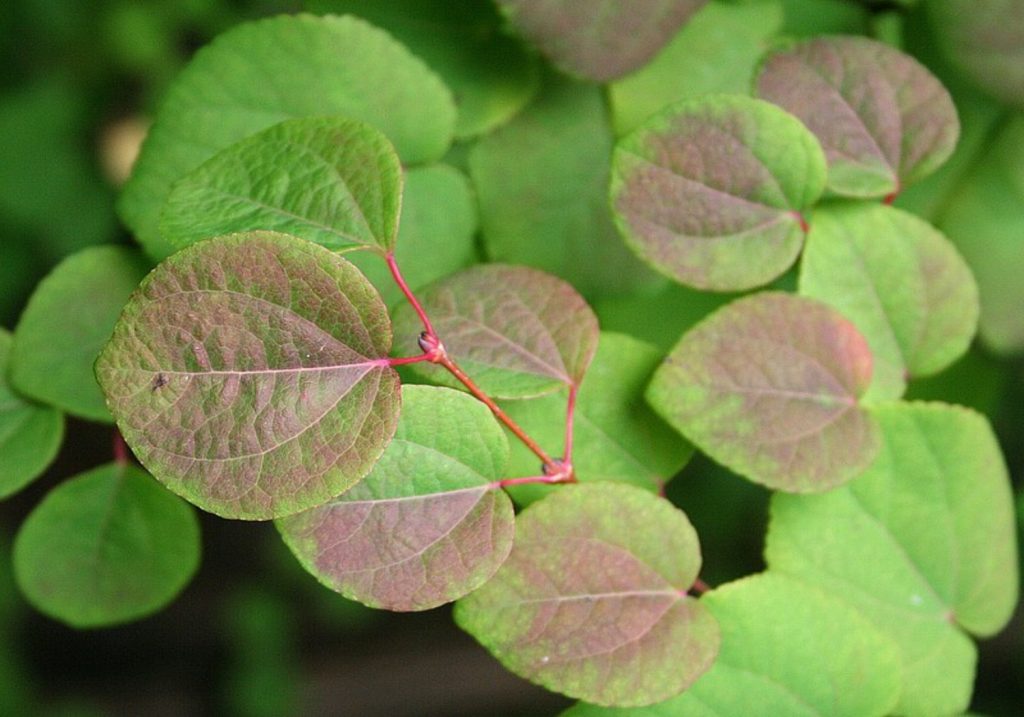
Benefits of katsura trees
The katsura is pest and disease-resistant. Even if the other trees in your landscape have fallen prey to bugs or been the victim of bacterial and fungal issues, katsura trees often grow unabated. This is the perfect tree for the gardener who wants a shady yard without the hassle.
Turkish Hazelnut
| Scientific Name: | Corylus colurna |
| Lifespan: | 25 to 50 years |
| Growing Zone: | 4 through 9 |
| Height: | 40’ to 50’ |
| Spread: | 15’ to 35’ |
| Growth Rate: | Slow |
| Leaf Size: | 2” to 6” long |
| Sunlight Requirements: | Full to partial sun |
| Soil Type: | Slightly acidic to neutral; moist, well-draining |
The Turkish hazelnut tree isn’t self-pollinating. So you’ll need to plant a male and female tree in relatively close proximity to ensure they cross-pollinate. When grown in fertile soils, these trees create more heart-shaped leaves than nuts. If you want your Turkish hazelnuts to produce more nuts than leaves, then plant them in nutrient-deficient soil to encourage them to do so. It can take anywhere from 3 to 9 years for these trees to produce nuts.
Turkish hazelnuts are slow-growing, so don’t expect fast shade from these trees. But if you have a sunny yard and well-draining soil, you can easily grow them without much extra effort. For most of their younger years, these trees look a lot like shrubs, covered in dense foliage with snippets of the plain brown-gray bark peeking out between the leaves. Mature trees have dense canopies of heart-shaped foliage.
As you might’ve guessed, Turkish hazelnut trees are immensely popular with squirrels. Try installing an owl box near your Turkish hazelnut trees to encourage migrating owls to visit and help keep these pests off of your plants.
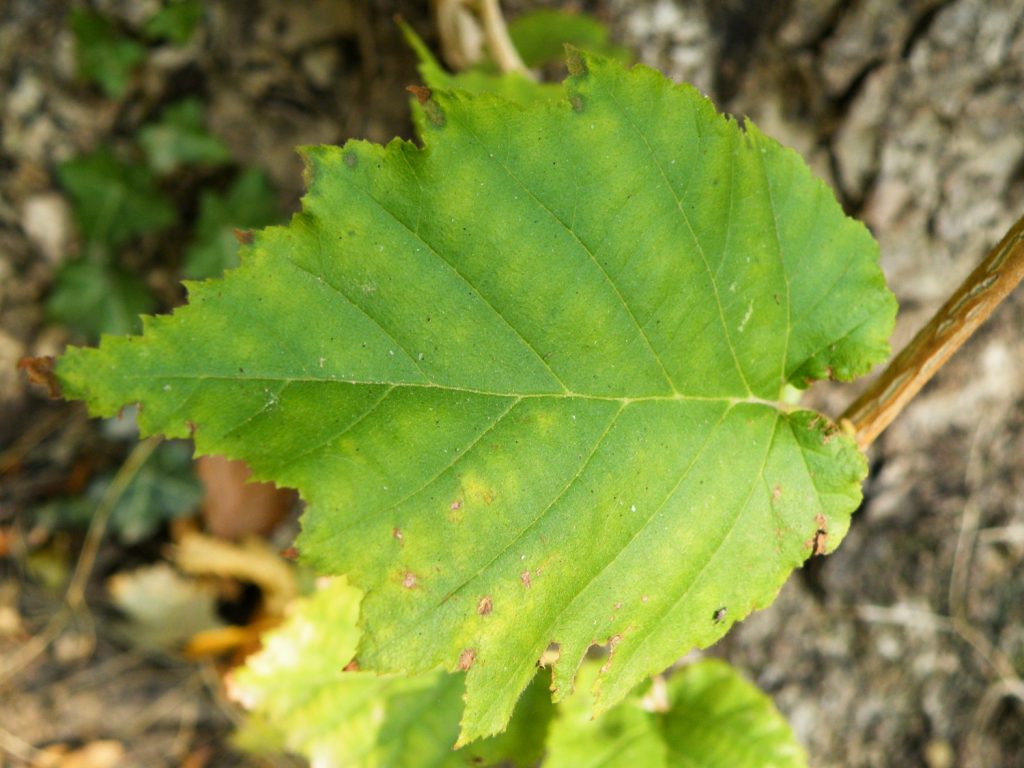
Benefits of Turkish hazelnut trees
The main benefit of the Turkish hazelnut tree is its nut production. Even if you don’t care about harvesting the tree’s hazelnuts for yourself, they’re still very popular with local wildlife. If you want to bring more squirrels, deer, and other foragers to your property, keeping a few Turkish hazelnut trees in your yard is the way to do it.
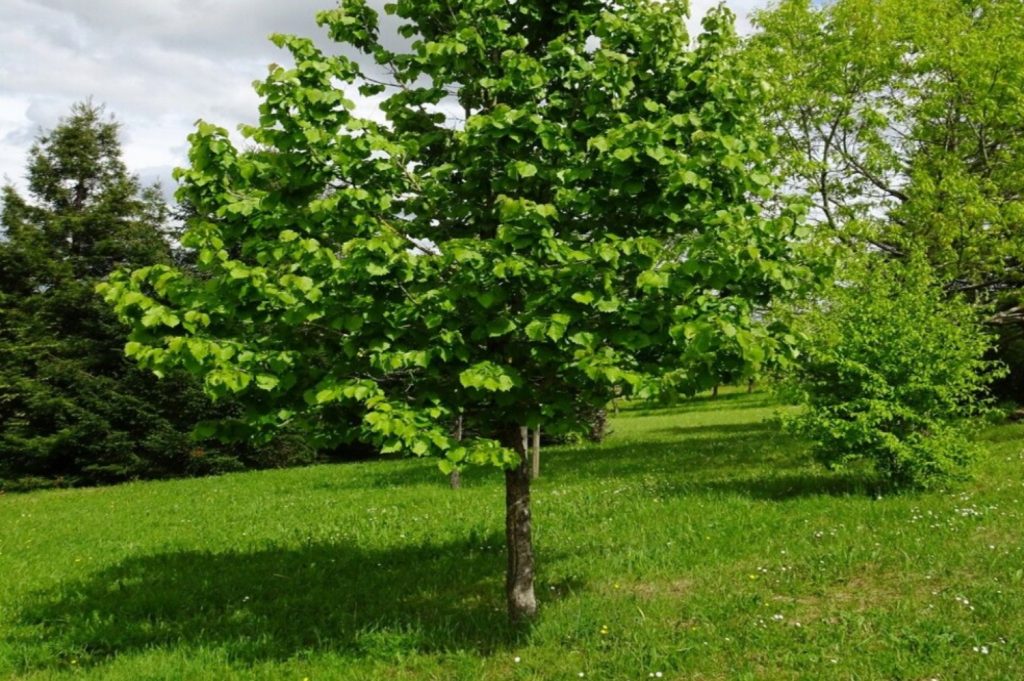
What are the benefits of growing trees with heart-shaped leaves?
Anytime you plant a tree, you do your local environment a tremendous favor. Trees help aerate the ground while also stabilizing the soil to prevent erosion. In some cases, as with Italian Alder trees, they can even improve nutrient availability for surrounding plants. When you plant a tree, whether it has heart-shaped leaves or not, you provide local wildlife with additional housing and more food. So consider growing one of these trees with heart-shaped leaves in your backyard. You’ll dress up your landscape and support your local ecosystem all at the same time.
